Search
Did you mean: Galatia?
Search Results
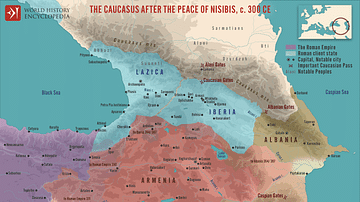
Image
The Caucasus after the Peace of Nisibis, c. 300 CE
A map illustrating the Caucasian states after the First Peace of Nisibis in 299 CE depicts a period of geopolitical stability and well-defined borders between the Roman and Sassanid Empires. This treaty, aimed at settling disputes and establishing...
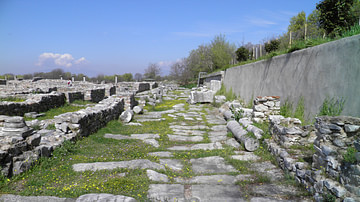
Image
Via Egnatia in Philippi
A stretch of the Via Egnatia in Philippi (Greece). The Via Egnatia crossed the Roman provinces of Illyricum, Macedonia, and Thrace, running through territory that is now part of modern Albania, the Republic of Macedonia, Greece, and European...
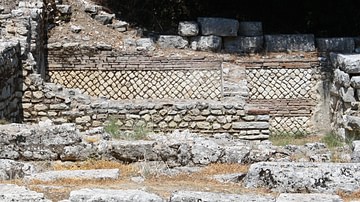
Image
Roman Opus Mixtum Wall
A segment of typical 2nd century CE Roman wall from Butrint (modern Albania). The wall is in the opus mixtum style which combined layers of opus testaceum (standard brick facing) with opus reticulatum (square-based pyramid blocks set in a...
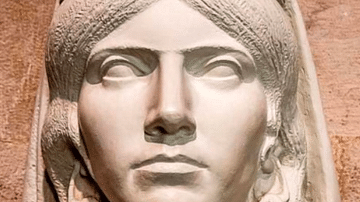
Image
Queen Teuta
A modern bust of Teuta, the 3rd-century BCE queen of the Ardiaei, an Illyrian tribe. Teuta commanded fleets that were accused of piracy by the Romans, who sent a force to defeat her in 229/228 BCE.
Krujë, Albania.
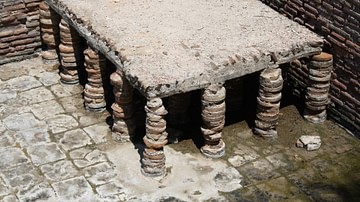
Image
Roman Baths Floor, Butrint
A section of the Roman baths flooring at Butrint (modern Albania), 2nd century CE. The brick piles allowed for the circulation of warm air to heat the baths.
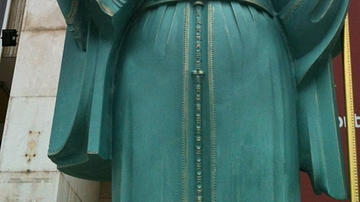
Image
Statue of Queen Teuta
Statue of the Illyrian Queen Teuta (r. 231-227 BCE) and Pinnes in Tirana, Albania
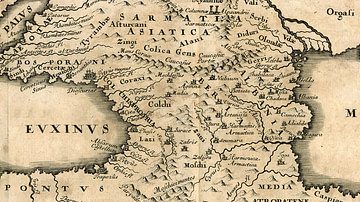
Image
Map of Colchis
Detail from the map “Bosporus, Maeotis, Iberia, Albania et Sarmatia Asiatica “ by CHRISTOPHORUS CELLARIUS (1638-1707), from the book “Notitiae Orbis Antiqui sive Geographiae Plenioris Tomus Alter Asiam et Africam“, printed in Leipzig by Gleditschi...
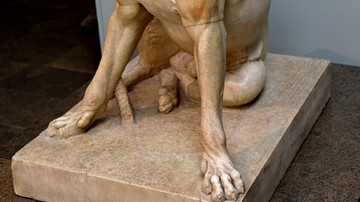
Image
Molossian Hound
The Molossi inhabited ancient Epirus (modern northern Greece and Albania). This dog once wore a collar. Its gaping jaws show powerful teeth, but the relaxed pose and upward gaze give it an obedient air. Five other versions of this sculpture...
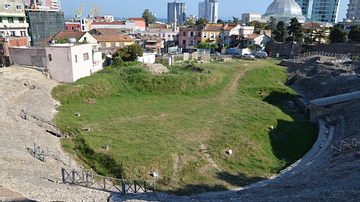
Image
Amphitheatre of Durrës (Dyrrachium)
The Amphitheatre of Durrës (Roman Dyrrachium) in Albania was built in the 2nd century CE and held 15,000 to 20,000 people. It is among the largest monuments of antiquity to have survived on Albanian territory.
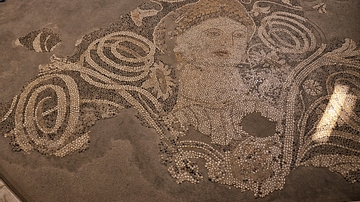
Image
The Beauty of Durrës Mosaic
Mosaic called "The Beauty of Durrës", from Epidamnos/Dyrrhachium, 4th century BCE. National Museum of History in Tirana, Albania.